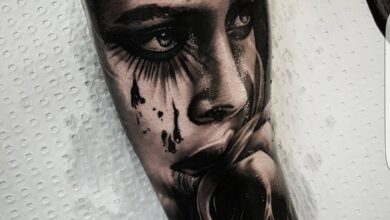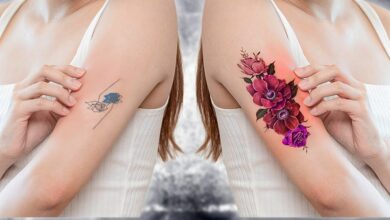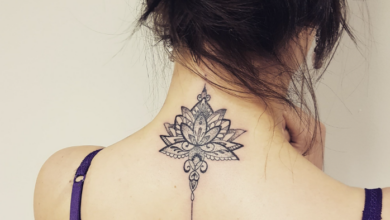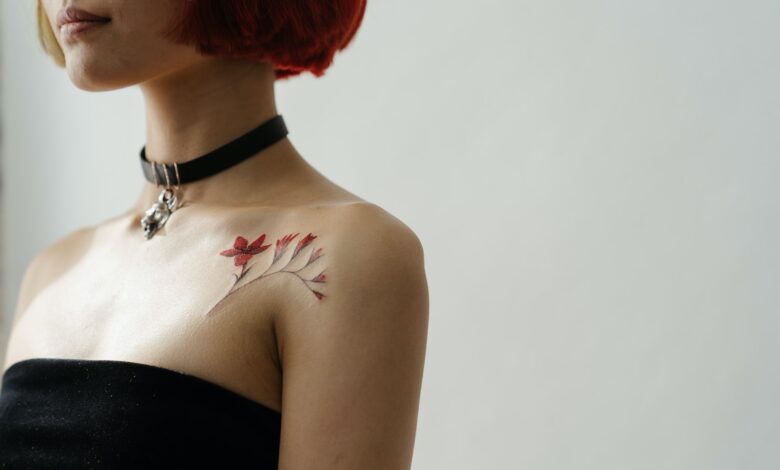
In the ever-evolving world of fashion, an unconventional trend has emerged – tattoos. No longer seen as taboo, stylish tattoos have made their way into the hearts (and bodies) of fashion enthusiasts and industry insiders alike. From models to designers, tattoos have become a form of self-expression and artistry, pushing boundaries and challenging traditional notions of beauty. Join us as we explore the vibrant world where fashion meets ink, uncovering the unique stories and personal meanings behind the tattoos within the fashion industry.
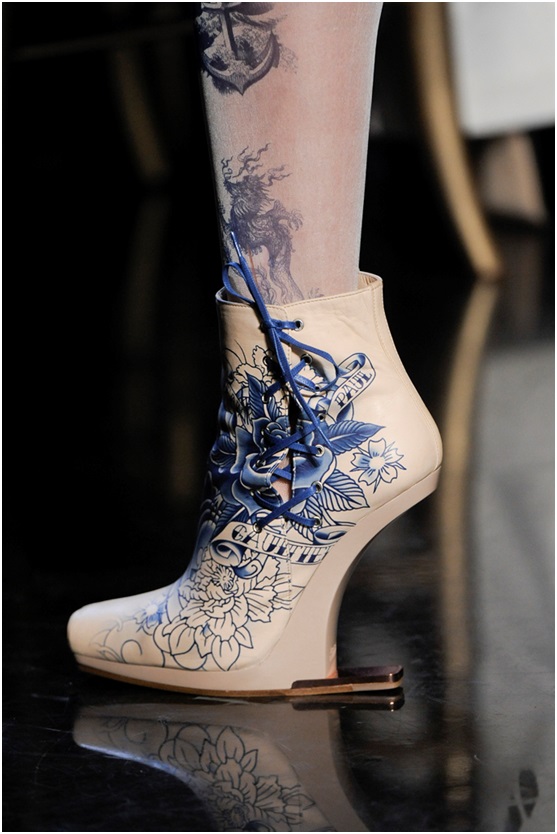
The Rise of Tattoos in the Fashion Industry
Tattoos have become increasingly popular in recent years, and their presence in the fashion industry is no exception. What was once considered a form of rebellion or a symbol of counterculture has now become a mainstream trend in the world of fashion. From tattooed models strutting down the runway to fashion brands collaborating with renowned tattoo artists, tattoos have become a powerful form of self-expression and a coveted fashion accessory.
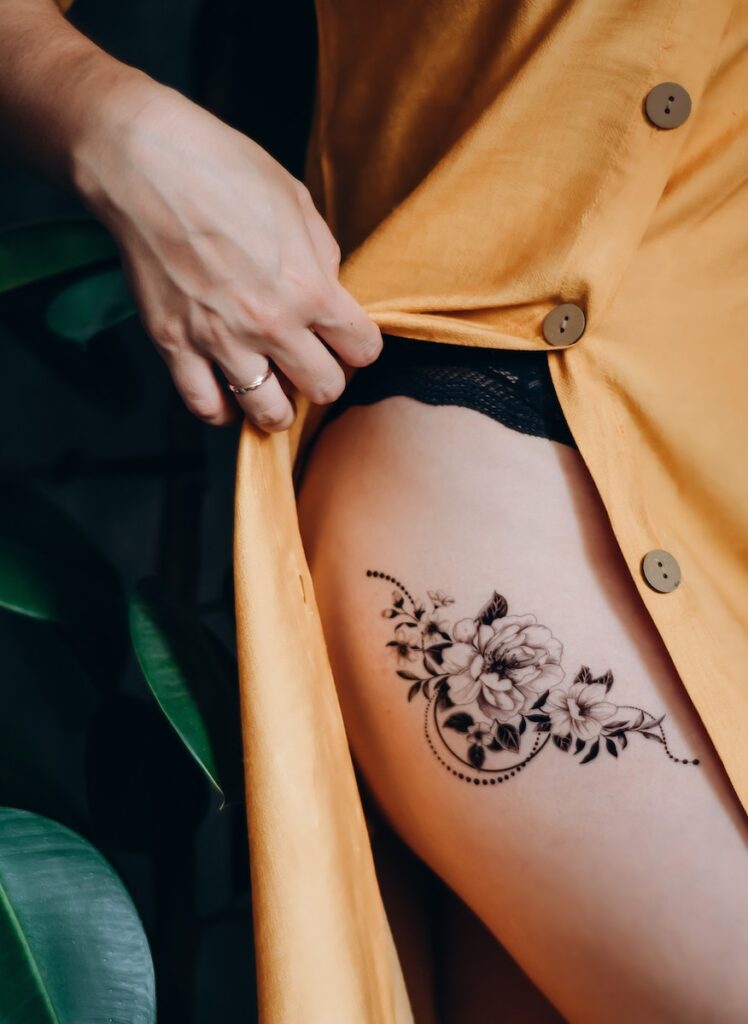
Growing Popularity of Tattoos
In the past, tattoos were often associated with sailors, bikers, and other fringe communities. However, as societal perceptions have evolved, tattoos have transcended their previous stigmas and have gained mainstream acceptance. More and more people are opting to get inked, not only as a form of self-expression but also as a way to showcase their personal style and individuality.

Tattoos as a Form of Self-expression
Tattoos have transcended their historical association with rebellion and counterculture to become a powerful form of self-expression in the fashion industry. For designers and models, tattoos serve as a dynamic canvas to communicate their personal narratives, beliefs, passions, and experiences. They are no longer merely decorative, but a means of storytelling and a reflection of one’s aesthetics.
In the fast-paced world of fashion, where trends come and go, tattoos provide a permanent and intimate glimpse into an individual’s identity. They offer a window into the soul, allowing designers and models to express their unique perspectives and connect with their audience on a deeper level. A small symbol hidden on the wrist may hold profound meaning, representing a pivotal moment or a cherished memory. Conversely, an intricate sleeve adorning the entire arm can serve as a visual tapestry, weaving together various elements that reflect the wearer’s multifaceted personality.
Moreover, tattoos in the fashion industry have become a tool for empowerment, breaking societal norms and challenging traditional beauty standards. They celebrate diversity and individuality, reminding us that beauty lies in embracing our differences. By proudly displaying their tattoos, designers and models inspire others to embrace their own uniqueness and embrace self-acceptance.
The integration of tattoos into the world of fashion has also opened up new avenues for collaboration and self-promotion. Designers often collaborate with tattoo artists to create exclusive designs, infusing their collections with a touch of personal expression. This symbiotic relationship between the world of fashion and tattooing not only enhances the artistic value of both mediums but also fosters a sense of community and cross-pollination of ideas.
In addition to designers and models, tattoos have also become a defining feature for fashion enthusiasts and consumers. They allow individuals to curate their own personal style, using their bodies as a canvas to showcase their unique tastes and passions. From delicate script to bold geometric patterns, tattoos in the fashion world offer endless possibilities for customization, making each piece of body art a truly one-of-a-kind statement.
Tattoos have evolved from a form of rebellion to a respected and celebrated means of self-expression in the fashion industry. They provide designers, models, and fashion enthusiasts with an intimate and permanent way to communicate their personal stories, beliefs, passions, and experiences. Through their intricate designs and hidden symbolism, tattoos offer a glimpse into an individual’s identity, making them an indispensable tool for self-expression in the ever-evolving world of fashion.
Influence of Celebrities and Influencers
Celebrities and influencers play a significant role in shaping popular culture and influencing fashion trends. It comes as no surprise, then, that the rise of tattoos in the fashion industry can be attributed in part to the influence of these high-profile individuals. From rockstars like Rihanna and Justin Bieber to fashion icons like Cara Delevingne and David Beckham, tattooed celebrities have sparked widespread interest and admiration for body art, ultimately making tattoos more appealing and accessible to the general public.
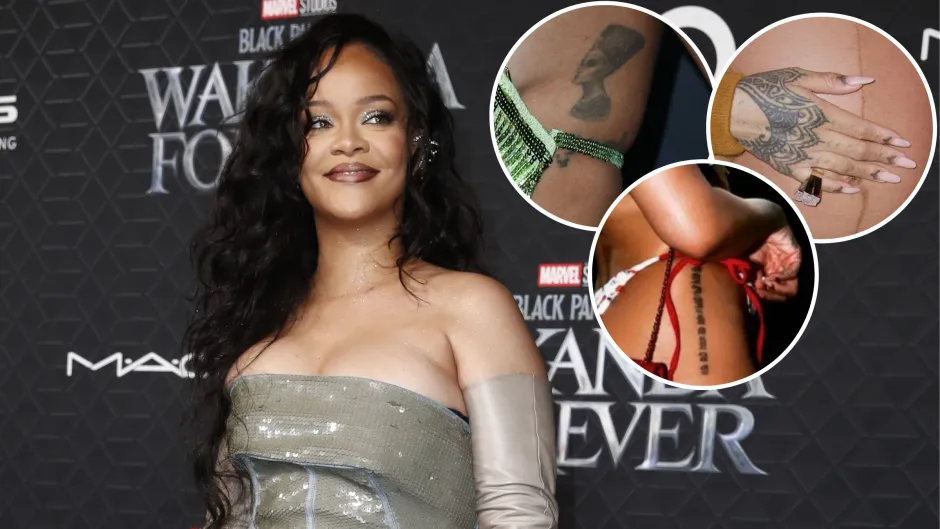
Tattoos and Fashion Runways
The presence of tattooed models on fashion runways has become increasingly common in recent years, marking a significant shift in the industry’s perception of beauty and self-expression. Designers, once bound by traditional beauty standards, are now recognizing the unique appeal that tattoos bring to their collections. As a result, we are witnessing a remarkable transformation in the fashion world, with greater diversity and representation on the catwalk.
Tattoos, once considered taboo and associated with rebellion or counterculture movements, have now emerged as powerful symbols of personal narratives, individuality, and artistic expression. They have become an integral part of modern fashion, challenging the conventional notion of beauty and pushing the boundaries of what is considered aesthetically pleasing.
By embracing tattooed models, designers are not only celebrating the artistry and craftsmanship of these intricate body designs but also acknowledging the stories and experiences each tattoo represents. Tattoos provide a unique canvas for self-expression, allowing individuals to showcase their identities, beliefs, and memories through permanent ink. By featuring tattooed models, fashion designers are effectively amplifying these narratives and fostering a sense of inclusivity within their collections.
The inclusion of tattooed models on fashion runways represents a powerful movement towards breaking down beauty stereotypes and embracing diversity. In the past, the industry predominantly favored models with flawless, unblemished skin, adhering to a narrow definition of beauty. However, the growing acceptance of tattooed models signifies a shift towards a more inclusive and progressive mindset. It highlights the recognition that beauty comes in all forms and that embracing individuality and uniqueness is key to creating a vibrant and representative fashion industry.
The impact of tattooed models on fashion runways extends beyond the catwalk itself. By showcasing a diverse range of models, fashion designers are encouraging society to embrace and appreciate the beauty of individual differences. This change not only promotes self-acceptance but also challenges societal norms that perpetuate unrealistic beauty standards. It sends a powerful message to individuals who may have once felt ostracized or judged for their tattoos, encouraging them to embrace their unique features and celebrate their own personal journeys.
Tattooed Models on the Runway
Fashion runways have traditionally been dominated by a narrow definition of beauty, with strict beauty standards often excluding individuals with tattoos. However, as the industry becomes more inclusive and diverse, tattooed models are breaking barriers and walking confidently down the runway, challenging conventional notions of what is considered beautiful.
These tattooed models bring a fresh and authentic perspective to the industry, showcasing that tattoos are not a hindrance but rather a unique and valuable aspect of their individuality. By embracing tattoos, fashion designers and brands are not only empowering these models but also reflecting the changing landscape of society.
Fashion Brands Collaborating with Tattoo Artists
In addition to featuring tattooed models, fashion brands are also collaborating with renowned tattoo artists to create unique and captivating designs. This collaboration between the fashion and tattoo industries has resulted in a fusion of art and fashion, bringing together two creative worlds to create pieces that go beyond traditional clothing.
These collaborations provide an opportunity for tattoo artists to showcase their work on a larger platform and for fashion brands to tap into the artistic talent and bold designs that tattoos bring. The result is an array of clothing pieces and accessories that display intricate and eye-catching tattoo-inspired motifs, bridging the gap between the world of fashion and the world of ink.
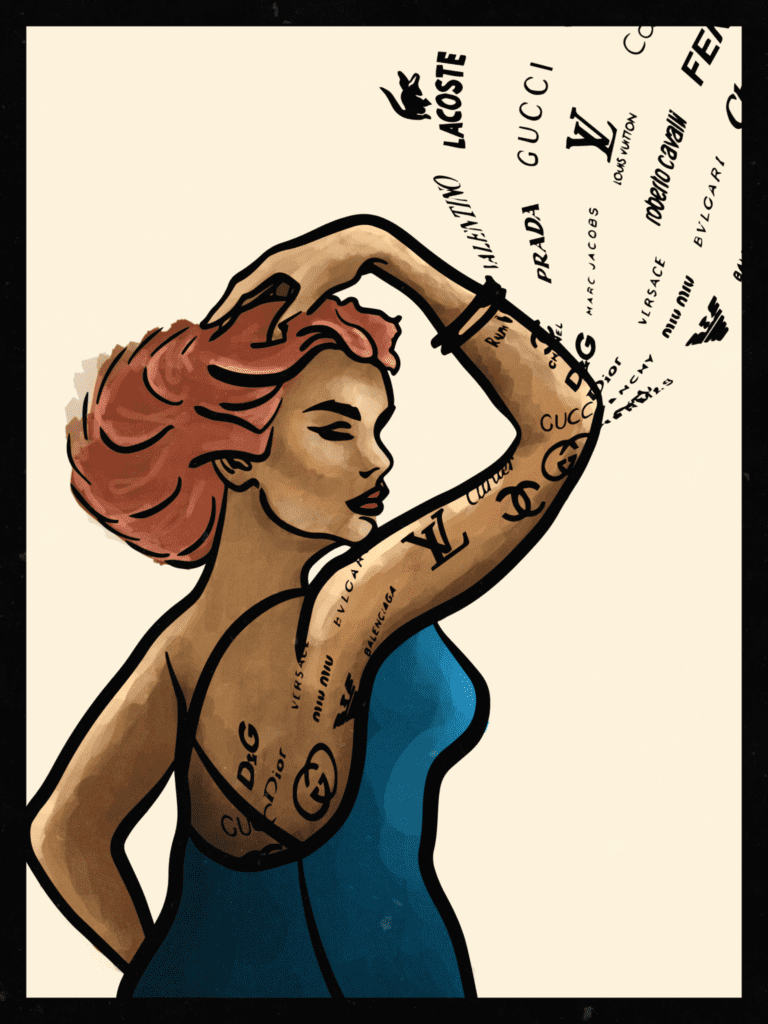
Tattooed Celebrities and Designers
Stylish Tattoos have become a defining characteristic of many celebrities, with prominent figures in the fashion industry proudly displaying their inked skin. These fashion icons serve as inspirations and trendsetters, challenging societal norms and promoting self-expression through body art.
Fashion Icons with Tattoos
Fashion icons like Cara Delevingne and Kate Moss have embraced tattoos as a form of self-expression. Their inked skin has not only become a part of their personal brand but has also contributed to the wider acceptance and admiration of tattoos in the fashion industry. These fashion icons have paved the way for other individuals to confidently display their tattoos and have played a vital role in normalizing body art in the fashion world.

Celebrity Designers and their Tattoo Collections
Tattooed celebrities have not only influenced fashion trends through their personal style but have also ventured into the fashion industry themselves. Celebrity designers such as Victoria Beckham and Kat Von D have launched their own clothing lines, incorporating their love for tattoos into their designs.
These celebrity designers understand the intimate connection between tattoos and fashion, infusing their collections with elements of body art. By doing so, they have not only created unique and fashionable pieces but have also strengthened the ties between tattoos and the world of high fashion.
Tattoos as Fashion Accessories
Tattoos have evolved beyond their traditional function as mere body art, and have now risen to the status of fashion accessories, carving a niche for themselves in the world of personal style. No longer confined to the realm of rebellious counterculture, tattoos have seamlessly integrated into mainstream fashion, becoming an indispensable part of many individuals’ fashion repertoire.
In this modern era, tattoos possess an unparalleled capacity to make a bold statement and convey a profound sense of self-expression. They have become a powerful tool for individuals to showcase their unique personality, passions, and values through intricate designs, symbols, and meaningful imagery permanently etched onto their skin. Whether it’s a delicate floral design, a striking geometric pattern, or a vivid portrait, tattoos have the ability to transform the human body into a living canvas, reflecting the wearer’s individuality and creativity.
Tattoos as an opportunity
Furthermore, tattoos offer an opportunity for individuals to curate their own personal style and create a distinctive visual identity. Much like selecting the perfect accessory or outfit, choosing a tattoo design allows one to carefully curate a visual representation of their interests, beliefs, and experiences. Tattoos have become a means of self-discovery, enabling individuals to explore their own narratives and leave an indelible mark on their physical appearance.
The increasing popularity of tattoos as fashion accessories can be attributed to their versatile nature. With a vast array of design possibilities, sizes, colors, and techniques, tattoos can be customized to suit any aesthetic preference or fashion trend. They can be prominently displayed or subtly hidden, serving as a captivating fashion statement or an intimate personal reminder, depending on the wearer’s preference. Tattoos offer a unique opportunity for individuals to experiment with their appearance, constantly adapting and evolving their style to reflect their ever-changing tastes and aspirations.
Stylish attoos have transcended the boundaries of gender and age, becoming universally embraced by people from all walks of life. No longer confined to a particular demographic, tattoos have become a unifying element within the fashion world, fostering a sense of community and self-acceptance. They have become a symbol of empowerment, encouraging individuals to embrace their bodies, celebrate their uniqueness, and break free from societal norms.
Tattoos have undergone a remarkable transformation, evolving from mere body art to coveted fashion accessories. They have emerged as a powerful medium for self-expression, enabling individuals to make a bold statement and showcase their personal style. Tattoos have become an essential part of many individuals’ fashion repertoire, allowing them to curate a unique visual identity and leave an everlasting mark on their physical appearance. As fashion continues to evolve, tattoos will undoubtedly remain a prominent and influential force, forever redefining the boundaries of personal style.
Tattoos as Statement Jewelry
Just as a piece of jewelry can enhance an outfit, tattoos can also serve as a statement accessory. Whether it’s a delicate ankle tattoo peeking out from under a pair of cropped trousers or an intricate back piece complementing a backless dress, tattoos have the power to elevate any look and add a unique touch of personal style.
Tattoos can also be thought of as permanent jewelry, allowing individuals to express their fashion sensibilities without the need for removable accessories. They provide a long-lasting and meaningful form of self-expression that can be proudly displayed and cherished as part of one’s personal style.

Incorporating Tattoos into Clothing Design
Fashion designers are increasingly incorporating tattoos and tattoo-inspired designs into their collections. From prints featuring intricate tattoo motifs to clothing pieces that mimic the look of tattoos, fashion has embraced body art in new and creative ways.
One notable example is the rise of tattoo-inspired temporary tattoos, which have gained popularity as a playful and non-permanent way to embrace the tattoo aesthetic. These temporary tattoos allow individuals to experiment with different designs and placements, giving them the freedom to express their personal style without the commitment of a permanent tattoo.
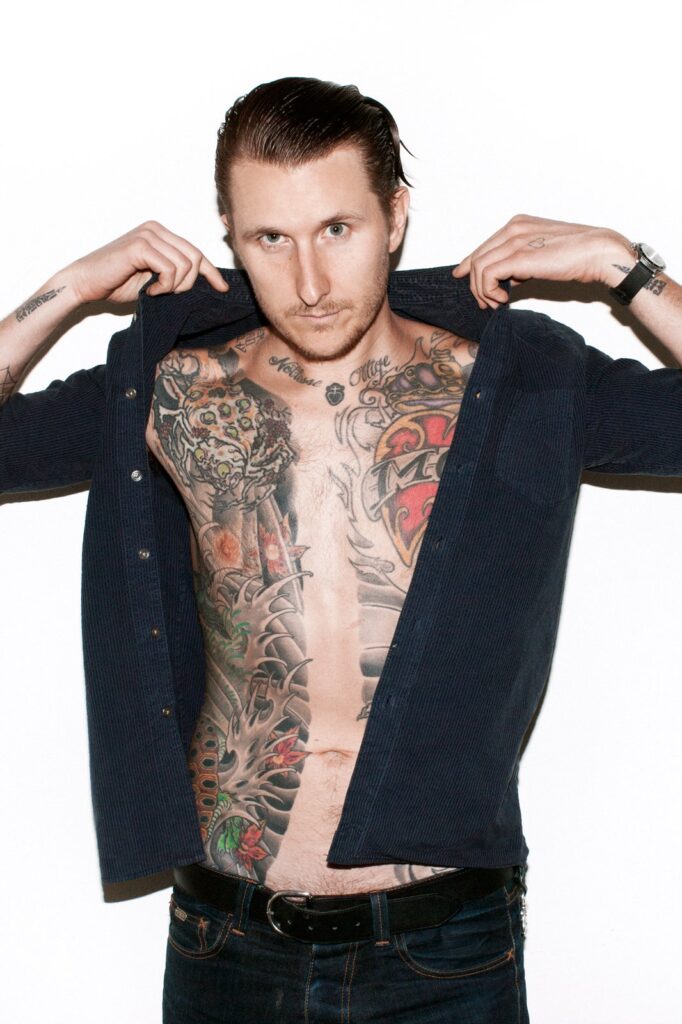
The Impact of Tattoos on the Fashion Industry
In recent years, the fashion industry has witnessed a remarkable shift in beauty standards and societal perceptions, propelled by the growing presence of tattoos. What was once considered unconventional and even taboo has now become an integral part of the industry’s landscape, reshaping the way we define beauty and challenging long-standing norms.
Tattoos, once associated primarily with counterculture movements and marginalized groups, have transcended their historical boundaries to become a powerful symbol of self-expression and individuality. As prominent figures in the fashion industry proudly display their inked bodies on runways, magazine covers, and social media platforms, tattoos have gained widespread acceptance and admiration. This widespread visibility has undeniably influenced and diversified beauty standards, challenging the notion that flawless, unmarked skin is the epitome of attractiveness.
Societal perceptions have also undergone a significant transformation in response to the growing prevalence of tattoos in the fashion industry. Previously regarded as rebellious or unprofessional, tattoos are now celebrated as works of art and personal narratives. This shift has helped break down stereotypes and foster a more inclusive and accepting society, where individuals are encouraged to embrace their unique stories and backgrounds.
The overall landscape of the fashion industry has been profoundly impacted by the rise of tattoos. Fashion designers, recognizing the cultural significance and market potential, have increasingly incorporated tattoos into their collections, blurring the boundaries between clothing and body art. This convergence has given rise to innovative collaborations between tattoo artists and fashion brands, resulting in awe-inspiring designs that fuse the worlds of tattooing and haute couture.
The integration of tattoos into the fashion industry has not only influenced traditional clothing design but also inspired new avenues for creative expression. Tattoo-inspired prints, motifs, and styles have become prevalent in streetwear, accessories, and even high-end luxury fashion. This fusion of artistic mediums has breathed new life into the industry, captivating a broader audience and infusing it with a fresh, edgy aesthetic.
The growing presence of tattoos in the fashion industry has had a profound impact on beauty standards, societal perceptions, and the overall landscape of the industry. This evolution has ushered in a new era of acceptance, celebrating individuality and diversity, while also sparking innovative collaborations and pushing the boundaries of fashion design. As tattoos continue to gain prominence, they serve as a powerful reminder that true beauty lies not in conformity but in embracing one’s authentic self.
Changing Beauty Standards
The rise of tattoos in the fashion industry has challenged traditional beauty standards that prioritize flawlessness and conformity. Tattooed models and individuals are challenging these norms by proudly displaying their body art, showcasing that beauty comes in all forms and that imperfections can be celebrated.
This shift in beauty standards has opened doors for a more inclusive and diverse industry. Fashion brands are recognizing the importance of representing a wide range of body types, skin tones, and personal styles, ultimately making fashion more accessible and relatable to individuals of all backgrounds.
The Tattooed Generation
The rise of the tattooed generation has played a significant role in shaping the fashion industry’s perception of body art. Millennials and Gen Z, in particular, have embraced tattoos as an integral part of their identity and self-expression. This generation’s affinity for tattoos has pushed the fashion industry to cater to their preferences, resulting in an increased demand for tattoo-inspired fashion and accessories.
The fashion industry has also recognized the immense purchasing power of this tattooed generation. Brands are actively targeting these individuals by incorporating tattoo-inspired designs in their collections, recognizing the impact of this demographic on fashion trends and consumer behavior.
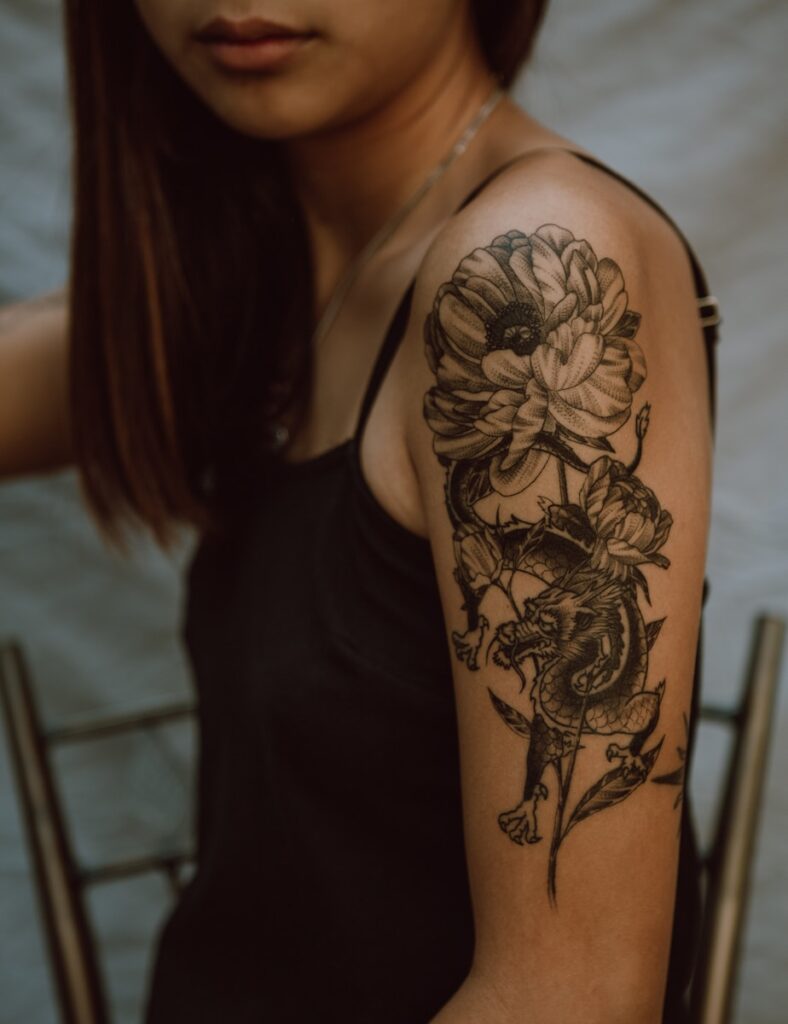
Tattooed Models as Role Models
Tattooed models are serving as role models for aspiring individuals who may have previously felt excluded by the fashion industry’s narrow standards of beauty. These models are not only challenging societal norms but are also inspiring others to embrace their own uniqueness and express themselves confidently.
The visibility of tattooed models on runways, social media, and in advertising campaigns is sending a powerful message that beauty is not limited to a specific set of criteria. By showcasing diversity in body art, the fashion industry is encouraging individuals to celebrate their individuality and to embrace their own personal style, regardless of societal expectations.
Controversy Around Tattoos in Fashion
Despite the growing acceptance and popularity of tattoos in the fashion industry, there are still some controversies surrounding their presence. While tattoos have become a form of self-expression and art for many individuals, some argue that they can hinder professional opportunities and be perceived negatively in certain professional settings. Additionally, concerns about tattoo regret and the permanence of body art persist among those who may be hesitant to embrace this trend. Some traditionalists argue that tattoos go against societal norms and traditions, which creates a divide in opinions regarding their acceptance. Despite these controversies, tattoos continue to gain traction in the fashion industry, challenging conventional beauty standards and promoting individuality and creativity.
Employment Discrimination and Tattoos
While the fashion industry has made significant strides in embracing tattoos, employment discrimination based on body art still persists in certain sectors. This discrimination is particularly evident in more conservative industries that place a premium on a polished and conventional appearance.
However, as the fashion industry continues to challenge societal norms, it is hoped that these discriminatory practices will diminish. Fashion brands and designers can play a vital role in promoting inclusivity by prioritizing diversity in their campaigns and hiring practices, fostering an environment where individuals with tattoos can flourish and be celebrated for their unique contributions.
Cultural Appropriation of Tattoos
Another contentious issue surrounding tattoos in the fashion industry is the cultural appropriation of tattoo designs and symbols. It is important for fashion brands and designers to approach the incorporation of tattoo-inspired elements with respect and cultural sensitivity.
By working closely with tattoo artists from diverse backgrounds or seeking permission from the cultures that originated these designs, the fashion industry can ensure that tattoo-inspired fashion does not perpetuate cultural appropriation. It is crucial that the rich history and symbolism behind these tattoos are acknowledged and respected, allowing for a more inclusive and ethical representation of body art in fashion.
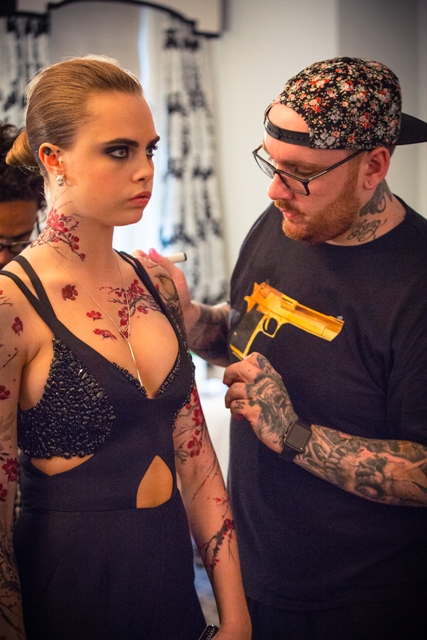
Tattoo Removal and Cover-Up Innovations
In recent years, tattoos have become increasingly popular in the fashion industry, with people embracing them as a form of self-expression and art. However, as the tattoo trend continues to evolve, so does the demand for tattoo removal and cover-up techniques. Fortunately, innovations in these areas have risen to the occasion, offering individuals more options and flexibility when it comes to modifying or concealing their tattoos. Whether someone wants to remove a tattoo altogether or simply modify it to better suit their changing tastes or professional requirements, the advancements in tattoo removal and cover-up techniques have made it possible to achieve the desired results with minimal scarring or discomfort. This newfound flexibility allows individuals to experiment with their body art, knowing that they have the option to modify or conceal it if ever needed.
Growing Demand for Tattoo Removal
While tattoos are often seen as a permanent commitment, advancements in tattoo removal technology have made it easier for individuals to modify or remove unwanted tattoos. Laser tattoo removal, for example, has become increasingly popular and accessible, allowing individuals to fade or erase their tattoos if they choose to do so.
The growing demand for tattoo removal highlights the evolving attitudes towards body art. As individuals grow and change, their tastes and preferences may shift, leading them to seek options for modifying or removing their tattoos. The fashion industry recognizes the importance of catering to these evolving preferences, providing individuals with the freedom to express themselves authentically.
Advancements in Tattoo Cover-Up Techniques
For those who wish to cover up their tattoos rather than remove them entirely, advancements in tattoo cover-up techniques have provided innovative solutions. Makeup brands have created high-coverage concealers and foundations specifically designed to camouflage tattoos, allowing individuals to temporarily hide their body art when desired.
These cover-up techniques offer individuals the flexibility to adapt their appearance to different occasions or professional settings while still acknowledging and respecting their tattoos as a part of their personal identity. The fashion industry is increasingly catering to these needs, providing individuals with a wide range of options to modify, conceal, or celebrate their tattoos as they see fit.
The Future of Tattoos and Fashion
The relationship between tattoos and the fashion industry has come a long way and is continuously evolving. In the past, tattoos were often seen as rebellious and unconventional, with certain industries, including fashion, viewing them as a taboo. However, in recent years, there has been a significant shift in perception. Tattoos are now celebrated as a form of self-expression and artistry, and the fashion industry is embracing this change. From runway models proudly displaying their ink to designers incorporating tattoo-inspired motifs into their collections, tattoos have become an integral part of the fashion world.
This dynamic partnership between tattoos and fashion not only adds a new layer of creativity and individuality to the industry but also opens up endless possibilities for collaboration and innovation. The future looks promising for this evolving relationship, as both tattoos and fashion continue to push boundaries and redefine cultural norms.
Innovation in Tattoo Technology
As tattoos become more intertwined with fashion, innovations in tattoo technology are likely to emerge. From advancements in ink formulation to new tattoo application techniques, the fashion industry will continue to push the boundaries of body art.
One area of potential growth is the development of sustainable and eco-friendly tattoo ink. With sustainability becoming increasingly important in the fashion industry, tattoo artists and brands may seek to create inks that align with these values, ensuring that body art is not only aesthetically appealing but also environmentally conscious.
Increased Representation of Tattooed Individuals in the Fashion Industry
As the fashion industry continues to embrace diversity and inclusivity, we can expect to see a greater representation of tattooed individuals in fashion campaigns, runways, and editorial content. Tattooed models will become an integral part of the fashion landscape, showcasing the beauty and power of body art.
By championing diversity and challenging societal norms, the fashion industry can set an example for other industries, inspiring them to celebrate and embrace the unique identities of individuals.
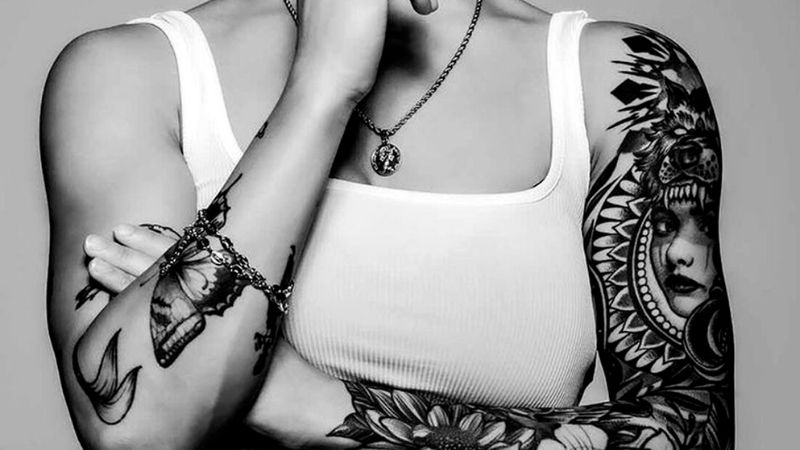
Conclusion
The rise of tattoos in the fashion industry has brought a new level of creativity, self-expression, and inclusivity to the world of fashion. Tattoos have transcended their previous connotations and have become widely accepted as a powerful form of self-expression and a coveted fashion accessory.
From tattooed models on runways to fashion brands collaborating with renowned tattoo artists, the fashion industry has embraced the beauty and allure of body art. Tattoos have challenged traditional beauty standards, empowered individuals to express their personal style, and sparked important conversations about inclusivity and cultural sensitivity.
As fashion continues to evolve, we can expect to see more innovations in tattoo technology, increased representation of tattooed individuals, and a deeper integration of tattoos into clothing design. The future holds exciting possibilities for the fashion industry, as it continues to merge with the world of tattoos, creating a space where self-expression and creativity can flourish.
Stylish.ae’s Introduction To The World Of Tattoos(Opens in a new browser tab)
Tattooing 101: Choosing The Right Tattoo’s Ink For Your Skin(Opens in a new browser tab)
Aftercare Affairs: Stylish.ae’s Essential Guide To Tattoo Healing(Opens in a new browser tab)

